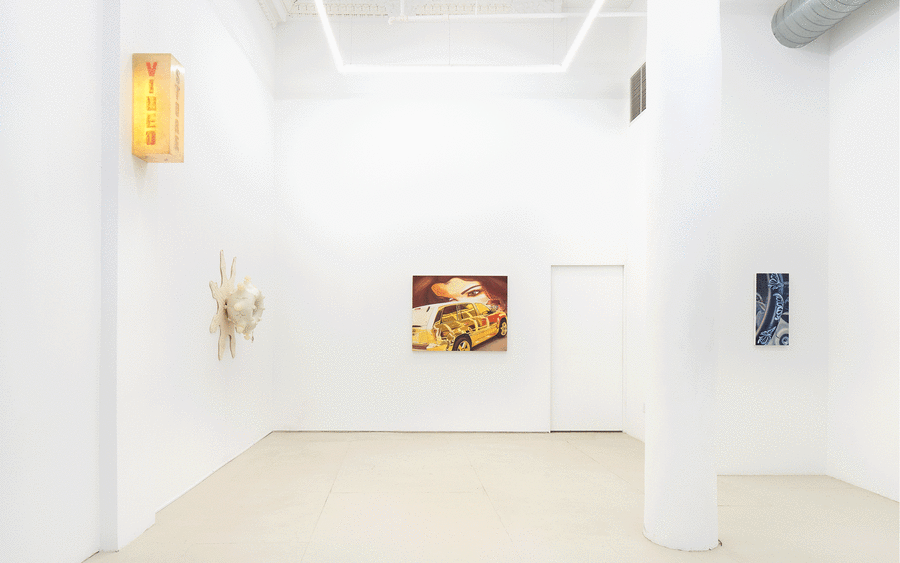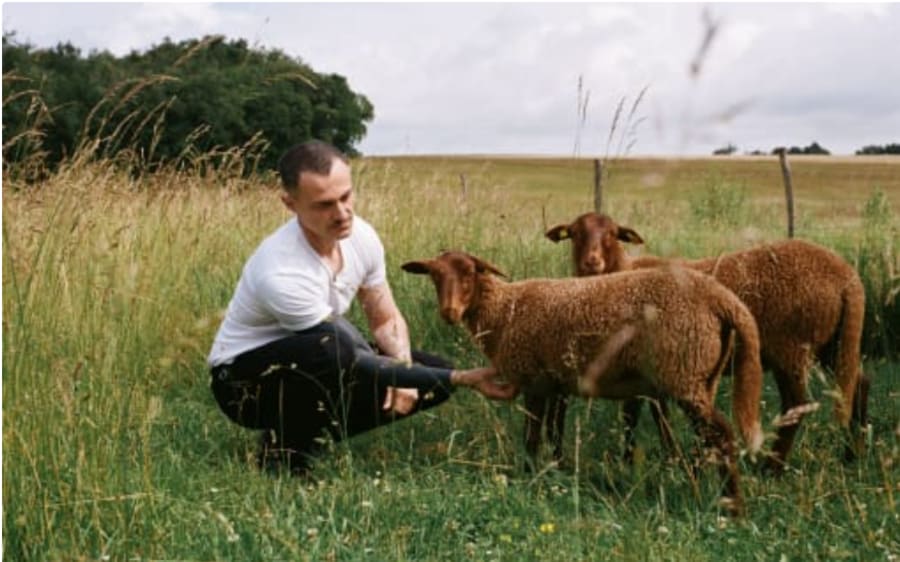In late December 1970, the weekly newsmagazine Time, reporting on the front lines of a culturally embattled American society, ran an ominous headline: ‘The US Family: “HELP!”’ To drive the point home, the issue’s cover featured The Family (1963), a sculptural work by Venezuelan-American artist Marisol, depicting a mother smiling widely despite being blinded by her hat, flanked by two children and an imposing, slightly distanced husband. (The original piece also includes a pram with two babies, cropped out of the Time cover.)
The same year, the artist made a subversive alternative to The Family. Dinner Date (1963) – an assemblage collaging carved wood with drawing, plaster, oil on canvas, textiles, and a variety of found objects – portrays two life-size female figures sitting at a table, sharing a meal. Painted on the table’s surface are two TV dinners, in their familiar partitioned aluminum trays. Both totem-like figures are rendered with the artist’s own visage. Smartly attired, their torsos encased in wood slabs, Marisol’s doubles – although placed in close proximity to each other – remain isolated in their blocky islands, their gazes fixed straight ahead. In the piece, the rituals of a couple are performed by ‘me and myself’, with the self always in flux.
Marisol’s sculptures incorporate influences from pre-Columbian art and folk tradition, and also draw from pop-cultural imagery. Her most iconic works tackle themes ranging from US imperialism, in the form of a gigantic, overfed baby (Baby Boy, 1962–63), and motherhood (Mi Mamá y Yo, 1968) to social status and disconnection: her ambitious piece The Party (1965–66) comprises 15 sculptures of elegantly attired socialites, 13 of which display Marisol’s face.
As second-wave feminism began to develop in the United States during the 1960s, Marisol conceived a series of sculptures that interrogated the tensions within the family and gender dynamics by prying at the boundaries of societal convention and exploring the tenuous space between separation and connection. Referring to Dinner Date, the artist stated: ‘The piece is about loneliness, but not about lonesomeness. If you learn to live with yourself, you have achieved something.’ While Marisol was famous for her silence (when she was 11 years old, her mother died by suicide, and the artist chose not speak afterward except when necessary), Dinner Date was her expressive attempt to cast a hush over the press’s relentless misogynist chatter about whether she would marry or planned to have children.
By the time Dinner Date was included in Marisol’s hugely successful exhibition at the acclaimed Stable Gallery in New York in 1964 – more than 2,000 people streamed through every day to view a panoply of carved, painted, photographed, and plaster works – she was well on her way to becoming one of the most famous female artists in the world. Her work and face were recognizable even beyond the art world, and journalists' breathless descriptions (‘a Latin Garbo,’ ‘a legend-provoking female’) trailed her like giddy puppies.
Marisol’s friend Andy Warhol dubbed her ‘the first girl artist with glamour.’ Pivotal to the Pop Art movement and influential to Warhol, she starred in four of his films. In one vignette, Warhol’s 16mm silent film Marisol-Stop Motion (1964), the artist is captured interacting with Dinner Date, sitting at the table and engaging in a complex dynamic of mimesis and alterity with her doubles, in which she uncannily appropriates characteristics of her copies, all the while revealing nothing.
In 1968, distraught by America’s involvement in the war in Vietnam, Marisol left her adopted home country to travel for an extended period. She learned to scuba dive in Tahiti and developed a new body of work that reflected her preoccupation with endangered marine life and the military industry’s impact on the ecosystem. However, her sculptures from this period – including fantastical human-aquatic hybrids like The Fishman (1973) – were harshly dismissed by the critics as ‘folk art.’ This work would go on to find its place in the dance world in the form of props and costumes, as the artist began to collaborate with choreographers such as Louis Falco and Martha Graham.
When Marisol passed away in 2016, she bequeathed her estate to Albright-Knox Art Gallery in Buffalo, New York (now the Buffalo AKG Art Museum), where a sweeping retrospective covering six decades of innovative and prescient production now brings the artist back into the spotlight. Both feminism and the US family have long since taken new forms, and Dinner Date, with its fascinating interplay and insinuations of multiple selves, individuality and coupling, loneliness and empowerment, will surely open for fresh readings by a contemporary audience.
‘Marisol: A Retrospective’ runs from July 12, 2024 to Monday, January 6, 2025 at the Buffalo AKG Art Museum in Buffalo, New York.
Euridice Arratia is a Paris-based writer and curator.
Caption for top image: Harry Mattison, Portrait of Marisol, December 1976. Courtesy of Bill Katz and the Buffalo AKG Art Museum, Buffalo. © Harry Mattison.
Published on July 10, 2024.


